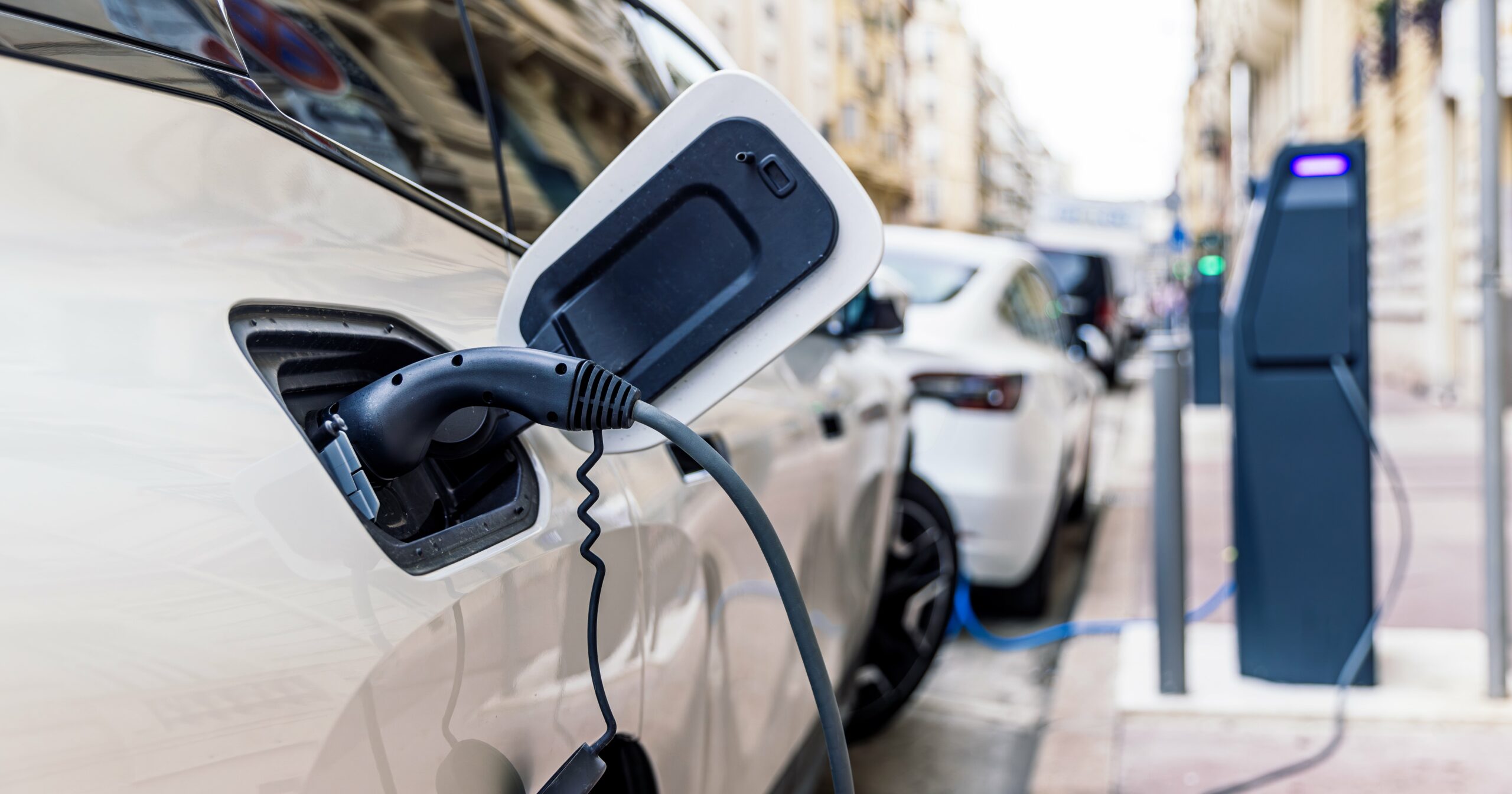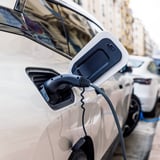Electric vehicles are pretty popular these days, and for good reason.They’re better for the environment, don’t come with a hefty gas bill, and are super quiet on the road. But there’s one icky downside to EVs you may not be aware of (or, on the flip side, may be very aware of). For some people, riding in these cars can trigger a nasty bout of motion sickness-just take a look at the many videos from TikTok users sharing their stomach-churning experiences of riding in Teslas, specifically.
So why are so many people reporting motion sickness after being in a Tesla? And what can you do to avoid this yuckiness if your next Uber ride happens to be in an EV? Keep reading to find out.
Experts Featured in This Article
Monya De, MD, MPH, is a physician in Los Angeles.
Brynna Connor, MD, is a board-certified family medicine physician.
What Causes Motion Sickness In a Tesla?
First, let’s talk about motion sickness in general. The cause isn’t completely understood, but experts believe it’s likely the result of the sensory delay that happens when you’re in a moving vehicle, says Monya De, MD, MPH. Essentially, motion sickness occurs when there’s a discrepancy between what your eyes see, what your inner ear senses, and what you’re registering in your brain and your body, explains Brynna Connor, MD. This disconnect can cause uncomfortable symptoms like nausea, vomiting, dizziness, and sweating, she says. Motion sickness usually happens to passengers rather than drivers because passengers may be focusing on something that’s not moving (like a book or a screen) while their body is experiencing the motions of the car, she adds.
As for why Teslas (and EVs in general) seem to cause motion sickness more than traditional cars? Blame the regenerative braking mechanism, which causes the car to stop abruptly and then accelerate very quickly, as well as the screens and quiet motor (more on the specifics behind these in a moment). Even if you’ve never gotten car sick, you may find yourself feeling less than stellar in a Tesla. It’s entirely possible to experience motion sickness in an electric vehicle and not in traditional cars for these reasons, Dr. Connor points out.
Here’s how each of these EV-specific features contribute to motion sickness.
- Regenerative braking: This braking system uses the car’s kinetic energy to slow down, then converts that energy into electricity, which is stored in the car’s battery for future use (like when the driver is ready to accelerate again), as per J.D. Power. “In a Tesla, the regenerative braking can be jerky and unfamiliar to people who are used to a different kind of car motion,” Dr. De says. In an EV, such as a Tesla, you can go from zero to 60 very quickly, triggering more jerking movements than those that occur when someone accelerates and then brakes in a regular vehicle, Dr. Connor adds. Some TikTok users also claim that drivers often don’t know how to use the regenerative braking feature properly, which can lead to even more pronounced-and nausea-inducing-movements.
- Quiet motor: One of Tesla’s biggest attributes can also be a pitfall. Because they’re so darn quiet, your ears aren’t registering what’s happening, says Dr. Connor. This in turn causes that sensory disconnect that can trigger motion sickness.
- Screens: Teslas and other EVs typically have large screens. And, remember, looking at screens causes that problematic sensory delay between your eyes, brain, and body.
How to Deal With Motion Sickness In a Tesla
According to both experts we spoke with, the best strategies to combat motion sickness in a Tesla are very similar to what you’d do in any other kind of vehicle. Here’s what they suggest.
- Change where you sit and what you do in the car. Dr. De advises that people with motion sickness ask to be the driver or front seat passenger, and also avoid reading or looking at screens. Admittedly, the screen part can be challenging in an EV; Dr. Connor recommends looking out the window, which helps minimize that sensory disconnect we talked about.
- Stock up on ginger candy. Sucking on ginger candy while in a Tesla could help alleviate your motion sickness symptoms, Dr. De says. Indeed, research shows ginger may be helpful in reducing nausea and vomiting.
- Avoid eating large meals. Chowing down on a large meal right before getting in any car could contribute to nausea, says Dr. Connor. Try to eat lightly before riding in a Tesla, whenever possible.
- Stay hydrated. People who are dehydrated may be more susceptible to motion sickness since dehydration can exacerbate symptoms like headaches, explains Dr. Connor. It’s why Mount Sinai recommends drinking plenty of water to help reduce motion sickness symptoms. More specifically, the Mayo Clinic advises that men drink approximately 15.5 cups and women 11.5 cups of fluids per day for ideal hydration.
- Get a good night’s sleep beforehand. If you know you’re going to be in an EV the next day, get a decent night’s rest beforehand. “When your body and brain are fatigued, you’re going to have a lower threshold for motion sickness,” Dr. Connor explains.
- Arm yourself with the right meds. Certain OTC meds can help with motion sickness, no matter what kind of car you’re in. Antihistamines help dry out the inner ear, in turn helping alleviate motion sickness, Dr. Connor says. There are also anti-nausea patches (known as scopolamine transdermal patches) that you can wear behind the ear. “They help suppress the central nervous system’s reaction to the sudden movement and produce a calming effect on the stomach,” she explains.
- Get out of the car for some fresh air. If your motion sickness has already set in (ugh, we’re sorry), consider asking the driver if they can safely pull over so you can get some fresh air and walk around for a bit, as this may help combat nausea, Dr. Connor says. Granted, this may not be possible if you’re in a rideshare, but it is an option if you’re road-tripping with friends or family.
- Press down on your P-6 pressure point. You can also try putting pressure on your P-6 pressure point to alleviate nausea in a car, Dr. De says. Per the Memorial Sloan Kettering Cancer Center, the P-6 pressure point is located on your inner arm near your wrist. You can perform some easy DIY acupressure on this point (and hopefully calm your nausea) by pressing down on it with your thumb and moving it in circles for two to three minutes.
- Brake slowly. Jeremy Judkins, a content creator who makes videos about Teslas, recently shared how to properly use the regenerative braking feature in a Tesla so it doesn’t lead to motion sickness. With normal vehicles, you immediately take your foot off the gas pedal and press down on the brake pedal to come to a complete stop. If you do this in a Tesla, however, it will cause that jerky movement that can cause motion sickness. Instead, Judkins says you should treat the accelerator pedal in a Tesla like a video game controller. Simply ease your foot off the pedal little by little so that the car slows down smoothly. Consider passing this advice onto the driver if you feel comfortable. (And if you’re driving, try it yourself!)
The bottom line: As we continue to find quicker, faster, and quieter modes of transportation, the odds are high that you’ll experience motion sickness at some point or another. It can take your brain and body time to get acclimated to these new types of unfamiliar movements, Dr. Connor says.
The good news? Dr. De says motion sickness for many EV riders has dissipated as they’ve gotten more used to the movements of the car. So even if you currently get queasy in the backseat of a Tesla, you may start to feel better over time. Plus, there are lots of things you can do both preventatively and in the moment to ensure smooth sailing (or riding, as it were) ahead.
Christina Heiser is a New York City-based freelance writer who’s been covering health, beauty, fitness, and nutrition for over a decade. Her work has appeared in PS, Women’s Health, Shape, Parade, and more.




